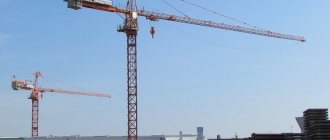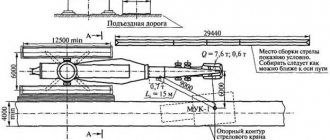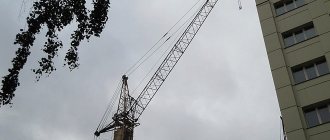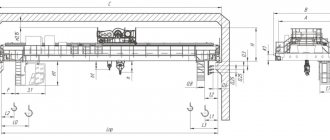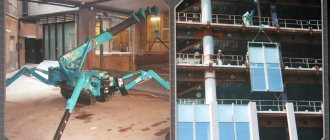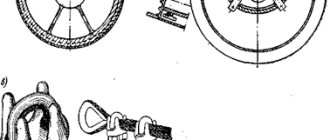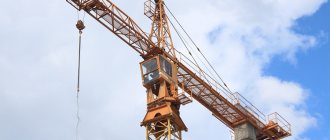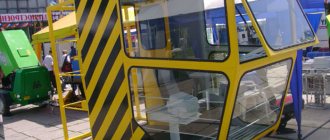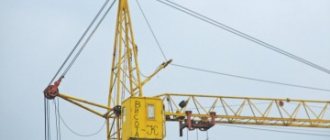A tower crane is a heavy and complex structure that is used for the construction of high-rise buildings or the movement of goods. Such objects have a limited service life, and after completing their service life, the metal can be handed over as scrap to a collection point. However, dismantling the crane will require financial investments, and it is impossible to carry out such work without the use of special equipment. As an alternative to dismantling the tower structure yourself, you can contact a company that will help dismantle the tower crane in Moscow and buy the resulting scrap at a price per ton.
Tower crane dismantling
with subsequent purchase of dismantled scrap metal.
The most favorable prices for dismantling in Moscow and Moscow Region;
The highest possible purchase price for dismantled scrap metal;
| Price for dismantling work for tower cranes | ||
| Service | Description of work | Price for 1 ton |
| Difficult dismantling | Dismantling of tower cranes using all necessary equipment anywhere in Moscow and Moscow Region. | From 1500 rub. |
| Garbage removal | After dismantling, we are ready to ensure waste removal using the necessary special equipment. | free when ordering dismantling |
| Turnkey dismantling | A full range of services for crane dismantling, including: cleaning, cutting of metal structures, metal removal. | from 1700 rub. |
Installation of tower cranes with top (SMK-10.200 and SMK-10.180)
Thanks to the pulley system, tower cranes with SMK-10.200 and SMK-10.180 heads are simple and easy to install and require minimal costs for additional equipment.
The crane base and the crane tower head section are easily joined on the ground and lifted into working condition by a pulley system. Lifting the crane boom and building up the tower is carried out quickly and with minimal labor and equipment.
The extension of a crane tower is carried out at a low height by lifting an already mounted crane tower with a special auxiliary mechanism and docking a new section of the tower, fixing it and further lifting the crane.
When installing a crane on a rail base, additional time is required to install the crane tracks. Dismantling of a tower crane is carried out in reverse form.
Dismantling of a tower crane in Moscow and the Moscow region
The dismantling of the tower crane is carried out after the completion of the construction of the facility and before the start of finishing work. It is very important to correctly carry out a set of measures to dismantle high-altitude equipment so as not to endanger people at the construction site. GlavRentaKran has been operating in Moscow and the Moscow region for more than 16 years. All our workers are specialists in their field and will be able to dismantle any tower crane without any problems. You can order the dismantling of a tower crane in Moscow and the Moscow region by leaving a request on our website or by calling:
+7(495) 205-09-00
Installation of top-slewing topless tower cranes
Installation of top-slewing topless tower cranes will require more time and effort, but will not create any problems for a team of professionals. In many ways, the installation method of a top-slewing crane depends on the type of crane base: on a support frame, on a rail, on an anchor base. Depending on the type of crane foundation, additional time may be required to install the crane foundation or crane runways. Dismantling is much faster.
1/2
The crane base and the crane tower head section are easily joined on the ground and lifted into working condition by a pulley system. Lifting the crane boom and building up the tower is carried out quickly and with minimal labor and equipment.
The extension of a crane tower is carried out at a low height by lifting an already assembled crane tower with a special auxiliary mechanism and when docking a new section of the tower, fixing and further lifting the crane.
However, when installing a crane on a rail base, additional time is required to install crane tracks. The tower crane must be dismantled in reverse form.
Dismantling and sale of scrap metal - profitable and convenient
When disassembling a crane of any size, it is necessary to use special tools and heavy equipment. Scrap of this design can be loaded only with the help of special loading equipment, and freight transport is used to remove the metal. Besides weight and dimensions, the main challenge in preparing a crane for demolition is compliance with safety regulations. Dismantling a high-rise and heavy frame should not damage objects located nearby.
Taking into account such difficulties and restrictions, it is much more profitable to hand over the metal with removal and dismantling at a price per ton. All dismantling services are carried out under the supervision of specialists, and modern transportation equipment is used for removal.
Tower cranes with a hook lifting height of up to 50 m are transported and installed assembled with a reduced number of tower sections (Fig. 21.65).
Cranes with a hook lifting height of more than 50 m and with a fixed tower are assembled from enlarged units.
Installation of cranes from individual elements is carried out when transporting the crane by rail or waterways.
Three tower installation schemes are used: lifting the tower as a whole, growing from below in separate sections, growing from above in sections.
The tower is raised using a cargo winch and a mounting pulley; extension - using a mounting mast and a separate winch and chain hoist.
Attachment cranes are mounted and dismantled using a mounting mast. But in all cases, a jib crane with a lifting capacity of 10-25 tons is used.
The complexity of installation, dismantling and loading operations depends on the design of the crane, the degree of its disassembly, the qualifications of the installers, the availability and quality of tools and auxiliary equipment.
The number of reinstallations per year ranges from 1 to 6.
—
All tower cranes of the KB series are mounted in one way—by lifting the tower folded forward (Table 4.7). The differences lie only in the design designs of the cranes, the methods of building up the tower and the reduction in the transport length of the crane during transportation.
Average data on the costs of relocation, installation and dismantling of the main models of tower cranes are given in table. 4.8.
Table 4.7. Technical and economic indicators of installation and dismantling of tower crane KB-303 (KBk-100.1)
Table 4.8 Average cost data for relocation, installation and dismantling of tower cranes
Before installation, regardless of the type of crane, it is necessary to prepare the installation site, lay a crane runway of at least 12.5 m in length, supply electricity, and deliver tower crane elements, equipment and tools necessary for installation to the construction site. Before starting installation, switch the electrical circuit of the crane to control from a remote control panel and connect it to the power supply. The tower is installed on its mounting rack, the struts are raised and block guards are arranged (Fig. 4.14). The mounting stand of the turntable is installed in the working position. Then the rolling trolley is rolled out, the crane running frame is installed and secured on the crane runway, after which the ballast is loaded and secured on the turntable. Release the head section of the boom and hang it on the cargo rope (Fig. 4.15). Raise the tower to the working position, and then lower the head section of the boom, join it to the main section (Fig. 4.16) and re-pass the boom brace rope. Raise the boom to the working position (Fig. 4.17), switch the electrical circuit from the remote control panel to control from the cabin, install the lighting fixtures, test the crane in accordance with the requirements of Gosgortekhnadzor and put it into operation.
The tower crane is dismantled in the reverse order of installation: first, the electrical circuit is switched to control from a remote control panel, the boom is lowered into the transport position and secured to the crane tower. The head section of the boom is lifted and suspended on a cargo rope. Then the tower is lowered into a horizontal position, the boom head is attached to its head section, the mounting stand of the turntable and the tower struts are lowered into the transport position and the road train is prepared for transportation.
The crane has three transportation options: assembled on a trolley, disassembled and assembled without a trolley (Fig. 4.18, 4.19, 4.20).
Rice. 4.14. Scheme of installing the tower on its mounting rack, lifting the tower strut and installing block fencing: 1 - tower mounting rack; 2 — block holder; 3 — tower strut; 4 — hook suspension of the K-162 truck crane; 5 — hook suspension of the tower crane; 6 - lining
Rice. 4.15. Scheme of suspension of the boom head section on a cargo rope: 1 - tower head; 2 — chain hoist rope; 3 — boom head section; 4 — installation rope; 5 — hook suspension
Rice. 4.16. The position of lowering the boom head section and docking it with the main section: 1 - boom head section; 2—main, boom section; 3 — cargo winch
Rice. 4.17. Boom lifting position to working position: 1 - hook suspension; 2 — cargo rope; 3 — weight limiting the lifting height of the hook suspension; 4 — crane boom; 5 - crane tower; 6 — cargo rope; 7 — jib winch; 8 — rotating platform; 9 — weather vane of the running frame; 10 — running trolley; 11- — running frame
According to the first option, the crane is transported on a trailer behind a MAZ-221G (MAZ-210G) tractor. The crane elements are loaded and unloaded using a truck crane with a lifting capacity of 16 tons. The crane tower rests on a special device mounted on the tractor frame. To allow the road train to pass through turns, it is possible to turn the dolly with the running frame by 30° relative to the axis of the train vehicle. The road train can drive onto the crane runway or forward along the crane runway, or in reverse from the end of the crane runway, or forward from the end of the crane runway. Ballast slabs are transported on vehicles with a carrying capacity of at least 7 tons.
According to the second transportation option, the turret assembly with boom and cabin is transported separately on a 1-PP-12.5 semi-trailer and a 2-R-15 spreader trailer, and the running frame assembly with a turntable is transported on a T-15IA heavy-duty trailer coupled with a MAZ-tractor. 504.
In the third transportation option, the crane tower is lowered onto the axle of the trailer and attached to it; Using a truck-mounted crane with a lifting capacity of 16 tons, the running frame of the tower crane is lifted by 900 mm and smoothly lowered onto a heavy-duty trailer (trailer - heavy-duty truck T-151A, spreader trailer 2-R-15 coupled with a MAZ-219 tractor).
The road train enters the crane runway in two ways: forward from the end of the crane runway and in reverse from the end of the crane runway.
Labor costs for transportation and crane are respectively 17.79 man-hours, 28.4 man-hours, 16.61 man-hours.
Installation of tower cranes KB-306 (S-981), S-981B is expensive (see Table 4.8).
At the beginning of installation, the tap is set to its original position. Raise the tower struts and the turntable mounting post into the mounting position (Fig. 4.21). The dolly trolley is rolled out, the crane running frame is installed and secured on the crane runway. Load the turntable with ballast and secure it to it. After this, raise the tower to a vertical position and attach the boom (Fig. 4.22), and extend the crane tower. Then the second section of the tower is installed and secured to the cradle (Fig. 4.23). Turn the cradle with the section into a vertical position, lift them and connect the first and second sections of the tower.
Rice. 4.18. Transport position of the assembled tower crane on a rolling trolley: 1 - YaAZ-221G tractor (YAZ-210G); 2 - crane tower; 3 — running frame with rotating plate; shape; 4 - dolly; 5 - special device for fastening the crane tower
Rice. 4.19. Transport position of the crane tower assembled with boom and cabin: 1— MAZ-200V tractor (YAZ-211G); 2 — trailer-dissolution 2-R-15; 3 — semi-trailer 1-PP-12.5; 4 — crane tower;
Rice. 4.20. Transport position of the assembled tower crane without a trolley: 1 - YaAZ-219 tractor; 2 — heavy truck trailer T-151A; 3 — running frame; 4—turning platform; 5 — crane boom; 6 — crane tower; 7 — trailer-dissolution 2-P
Rice. 4.21. Installation position of the tower strut and the turntable mounting stand in the mounting position: 1 - turntable mounting stand; 2 — boom of the K-162 truck crane; 3 — tower strut; 4 — tower brace brace
Rice. 4.22. Tower lifting position and boom attachment: 1 - mounting clamps; 2 — tower braces; 3 — tower mounting rack; 4 — boom base; 5 - crane tower; 6 — boom of the K-162 truck crane; 7 — jib guy; 8 — installation rope; 9 — ordinary section of the boom; 10 — head section-boom.
Table 4.9 Technical and economic indicators of installation and dismantling of tower cranes KB-306 and S-981B
The tower is extended to the size of the section and docked with the boom (Fig. 4.24). The third section of the tower is installed and secured on the cradle, turned it into a vertical position, the cradle with the third section is lifted and connected to the second section of the tower. At the last stage, the cargo and boom ropes are stored, the tower is secured in the portal and the boom is raised to the working position (Fig. 4.25).
After this, electrical equipment and mechanisms are adjusted and tests are carried out according to the rules of Gosgortekhnadzor.
Dismantle the tap in the reverse order of installation. The first transportation option (Fig. 4.26) for cranes of this type involves transporting them assembled on a dolly. The crane is transported in a trailer to a KrAZ-219 tractor. The crane tower is supported by a support element on a special device mounted on the frame of the tractor. To allow the road train to pass through turns, it is possible to turn the dolly with the running frame by 30° relative to the axis of the road train.
A road train can enter a crane runway in two ways: forward along the crane runway, forward from the end of the crane runway. The counterweight plates and boom sections are transported on a semi-trailer - a ZPT-40 heavy truck with a KrAZ-221B tractor. Ballast plates, control weight and intermediate sections of the tower are transported on a trailer to a MAZ-504 tractor. When loading and unloading crane elements, a truck crane with a lifting capacity of 16 tons is used. According to the second option (Fig. 4.27), the cranes are transported disassembled.
The crane tower is transported separately on a semi-low-bed platform with a lifting capacity of 15.6 tons in a trailer to a MAZ-504 tractor and, on the same conveyor, a running frame with a turntable assembly. Two intermediate sections of the tower and boom, ballast plates and counterweight plates, as well as the control load are transported in the same way as in the first option.
Labor costs for relocating cranes are 27.68 man-hours in the first option, and 29.9 man-hours in the second option.
Rice. 4.23. Installation position and detail of fastening the ordinary section of the tower on the cradle: 1 - crane portal; 2 — boom of the K-162 truck crane; 3 - ordinary section of the tower; 4 - cradle
Installation, dismantling and two transportation options are identical for cranes KB-401 (KB-160.2) and KB-403 (KBk-160.2). General technical and economic indicators of these processes are given in table. 4.10. At the beginning of installation, the trolley is rolled out, the crane running frame is installed and secured on the crane runway (Fig. 4.28). It is loaded with ballast slabs and secured. After this, raise the tower to a vertical position (Fig. 4.29), extend it and insert the second section into the portal.
Rice. 4.24. The position of the tower extension by the size of the ordinary section and the docking of the boom: 1 - base of the boom; – 2 — rectangular section of the boom; 3 — cargo rope; 4 — hook suspension
Rice. 4.25. The position of securing the tower in the portal and raising the boom to the working position; 1 — jib winch; 2 — cargo winch; 3 - portal; 4 - tower; 5 - boom; 6 — hook clip
Rice. 4.26. Transport position of the assembled KB-306 crane on a rolling trolley: 1 - KrAZ-219 tractor; 2 — head of the crane tower; 3 - bansha crane; 4 — rotating platform; 5 – running frame; 6 — dolly; 7 - boom; 8 — crane cabin
Table 4.10 Technical and economic indicators of installation and dismantling of tower cranes KB-401 and KB-403
The boom base is hingedly connected to the intermediate section and the head (Fig. 4.30). Next, the tower is advanced to the third section and the boom elements are rigidly connected. Then they push the tower onto the fifth section and secure it to the portal and diagonal beams. At the final stage, raise the crane boom to the working position (Fig. 4.31) and switch the electrical circuit to control from the cabin.
Next are the same operations as in the previous case.
Rice. 4.27. Transport position of the crane tower on a semi-low bed platform: 1 - MAZ-504 tractor; 2—semi-low-frame platform; 3~ wooden pads; 4— crane tower; 5 - boom base
Rice. 4.28. Installation position and fastening on the crane runway of the crane running frame:
Rice. 4.29. The position of raising the tower to a vertical position: 1 - jib winch; 2 - crane tower
Rice. 4.30. The position of the crane tower extension with the insertion of the second section into the portal and the connection of the boom base with the intermediate section and head: 1 - boom base; 2 — hook suspension of the K-162 truck crane; 3 - head and intermediate section of the boom
Rice. 4.32. Transport position of the assembled crane, on a dolly: 1 - dolly; 2 — running frame; 3 - crane tower; 4 — KrAZ-221B tractor; 5 — crane cabin; 6—crane boom base
Rice. 4.33. Transport position of the second and third intermediate sections of the crane tower: 1 - ZIL-130 vehicle; 2 - second and third sections of the crane tower assembly; 3 — fences and portal stairs; 4 - wooden linings; 5 — trailer-dissolution 2-Р-8
Rice. 4.34. Transport position of the crane tower: 1— MAZ-504 tractor; 2 — semi-low-bed platform with a lifting capacity of 15.6 tons; 3 - wooden linings; 4 —• crane tower; 5 — crane cabin; 6 — tower head; 7 - boom base
When dismantling, lower the boom to a vertical position and re-pass the ropes. The tower is lowered and the fifth section is removed, the tower is lowered again and the fourth and third sections are dismantled, and then the boom is undocked. The tower is lowered into a horizontal position onto the tower mounting rack, the ballast plates are removed from the turntable, and the crane running frame is installed on the dolly.
When transporting an assembled crane on a dolly, it is transported in a trailer behind a KrAZ-221B tractor (Fig. 4.32). The crane tower rests on a special device mounted on the frame of the tractor. To ensure passage on turns, the dolly with the running frame is rotated 30D relative to the axis of the road train.
The road train enters the crane runway in three ways: forward along the crane runway, forward from the end of the crane runway, and in reverse from the end of the crane runway.
Four intermediate sections of the tower, an intermediate section and a boom head with guardrails and portal ladders are transported in two trips on a 2-R-8 spreader trailer in a trailer attached to a ZIL-130 vehicle (Fig. 4.33).
Rice. 4.35. Transport position of the crane's rotating platform: 1 - MAZ-504 tractor; 2 — semi-trailer-platform; 3 — crane rotating platform; 4 - electrical panel; 5 — mounting and rigging devices; 6 — cargo winch; 7 - jib winch
Ballast slabs and control cargo are transported on a ZPT-40 semi-trailer with a KrAZ-221B tractor.
To load crane elements onto vehicles and unload them, a truck crane with a lifting capacity of 16 tons is used.
When transporting the crane in disassembled form (second option), the tower is transported on a low-loading platform with a lifting capacity of 15.6 tons in a trailer attached to a MAZ-504 tractor, the rotating platform is transported on a flatbed semi-trailer with a MAZ-504 tractor, and the running frame is assembled on a low-bed platform with a lifting capacity of 15.6 tons in a trailer to the KrAZ-221B tractor (Fig. 4.34 - 4.36).
Four intermediate sections of the tower, the intermediate section and the boom head with guardrails and portal ladders, as well as ballast slabs are transported similarly to the previous option.
The labor intensity of transportation in the first option is 25.54 person-hours and in the second - 33.07 person-hours.
The KB-674 tower crane is transported only in enlarged units with the help of the same vehicles as in the previous case. The lower part of the crane is mounted using its own mechanisms and a jib crane with a lifting capacity of 25 tons. The height of the tower is increased in separate sections (Fig. 4.37) using the extension method using the crane’s own mechanisms.
The upper part of the crane is pulled out using a mounting stand located on the side of the tower, and the sections are brought in using a special traverse. The installation time for one tower section is 2.5 hours. After the tower has been installed to its full height, the installation stand is lowered down using its own winch. Installation of the fifth modification of the crane with a hook lifting height of 70 m takes 10 - 12 working shifts.
The cost of one crane relocation is 8,900 rubles, and the construction of a crane runway is up to 1,300 rubles. for one 12.5-meter link.
Rice. 4.36. Transport position of the running frame assembly: 1 — KrAZ-221B tractor; 2—low-load platform with a lifting capacity of 15.6 tons; 3 — weather vane; 4 — running frame; 5 - running trolleys; 6 - wooden linings
Rice. 4.37. Installation diagram of the KB-674 crane tower: I - lifting the crossbeam with a suspended tower section; II - securing the traverse to the upper section of the tower; III - extension of the upper part of the crane; IV - installation of the section into the tower opening; V—lowering the traverse releaser
